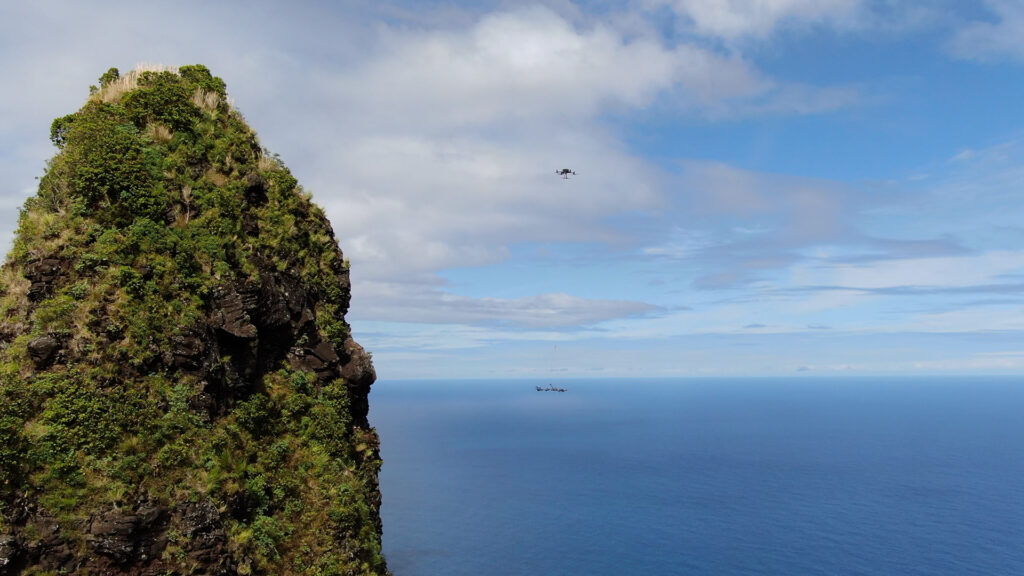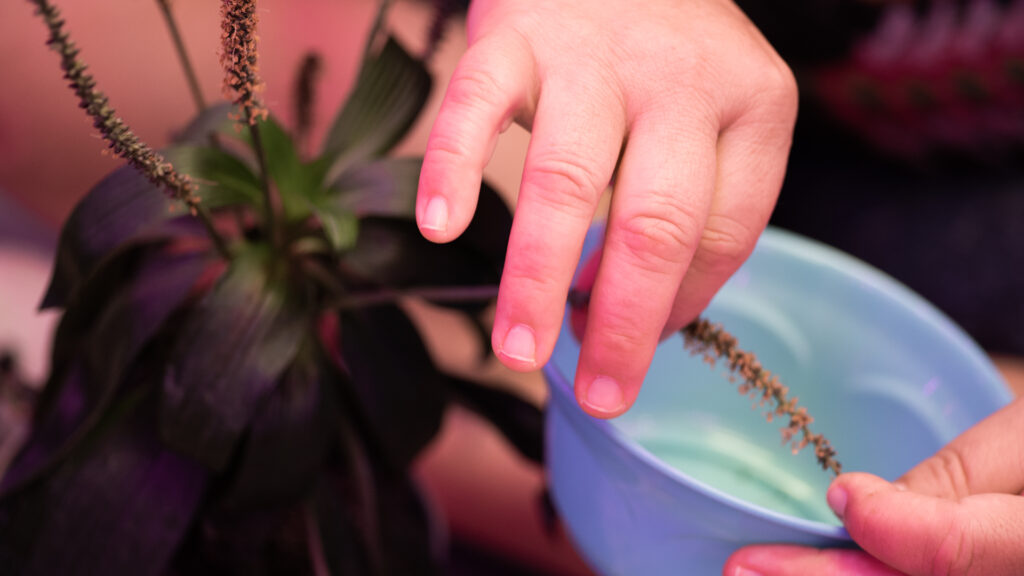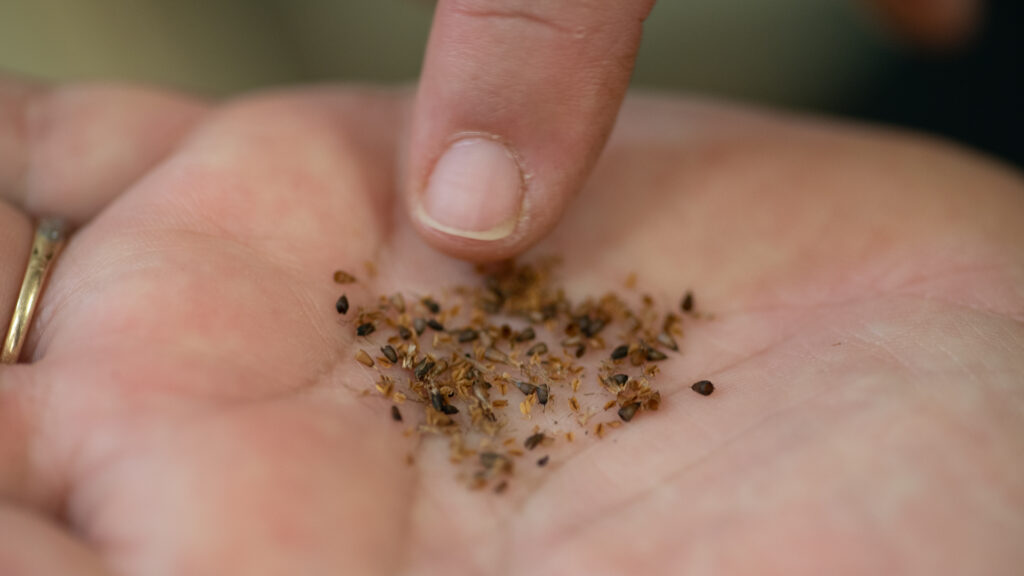By David Bryant, Director of Communications
What came into focus on the emerald peak of Mauna Pulou astounded our team. The drone relayed footage of an incredibly precious plant. There, backdropped by Limahuli waterfall and nestled amongst a tapestry of other cliff-dwelling plants, grew laukahi (Plantago princeps var. anomala). A healing herb in Hawaiian medicinal practice, this cherished species has supported wildlife and people for generations. The critically endangered anomala variety is found only on Kauaʻi. Before this fateful flight in 2017, it was thought that less than 25 existed.
(L) Laukahi (Plantago princeps var. anomala). (R) Laukahi on Mauna Pulou as seen by drone
Lei Wann, director of Limahuli Garden and Preserve, shares “Laukahi can be interpreted as either ‘singular leaf’ or many ‘singular leaves’. If you think about how remote and exceptionally rare this variety of laukahi is, it adds more metaphorical meaning to the few individuals remaining.”
The images taken that day in Limahuli Valley revealed a new population. They had persisted in the refuge of these storied cliffs, above the fray of development and pressures of invasive species. That was the first time a drone had been used to discover rare plants in the Pacific, led by Ben Nyberg (GIS and drone program coordinator). While this was a seminal step, our journey to safeguard laukahi had just begun.
To help perpetuate this critically endangered species, our next objective was to bring laukahi into cultivation. But retrieving seeds and cuttings by rappelling methods would be dangerous if not impossible. Once again, we turned to drones. Our drone program worked with engineers at Outreach Robotics and researchers from the University of Sherbrooke to design the Mamba. This drone-based tool is equipped with a robotic arm that can safely collect plants once perilously out of reach. The Mamba has revolutionized our collecting methods. We can now remotely collect plant cuttings from otherwise inaccessible cliffs and dramatically reduce the transit time of fragile plant material back to our nursery.

The Mamba ascends to the peaks of Limahuli Valley
In 2022, our teams returned for a flight to Mauna Pulou, this time with the Mamba. Where we could once only look at these exceedingly rare plants, we could now reach out and bring hope home. That day, the Mamba’s arm grasped the woody stem of a laukahi and delicately removed a cutting. The team was elated. We could now attempt to grow a brighter future for this plant in our Conservation Nursery.
“It’s been amazing to see the laukahi story come full circle. When we found the plants in 2017, we thought they were impossible to access. Now only five years later, we have those exact individuals growing in our nursery. It highlights just how far the technology has progressed” shares Ben.
(L) Lei Wann holding the freshly picked laukahi cutting. (R) Rhian Campbell with the rooted laukahi in our propagation lab
For nursery manager Rhian Campbell, “Protecting rare plants is both a challenge and responsibility.” Growing and caring for irreplaceable plants like the laukahi requires a deep understanding of their growing conditions and needs, which can often start off as a mystery. For Rhian, caring for these plants translates to caring for the ʻāina (land). “I view plants as integral members of a larger community that we are all a part of. I know deep down that we depend on healthy connections between all members of that community in order to survive.”
Once the laukahi cutting collected by the Mamba made its way to Rhian, the challenge before her and the nursery team was to successfully root the plant. Laukahi are notoriously difficult to root. The nursery team used a mixture of educated guesswork, a new propagation technique, and kept the cutting in a climate-controlled lab. All the investment and passion paid off: the laukahi rooted!
Soon after, hope not only took root – it flowered and seeded! The Mamba-collected plant developed several flowering heads and when we gently shook each to release pollen, seeds fell into the container underneath the plant. Several of these seeds have germinated and are surviving in our nursery. Rhian was also able to provide our Seed Bank with approximately 500 seeds for safekeeping.

Rhian Campbell collecting seeds from the flowering laukahi plant

Laukahi seeds
At NTBG, we’ve been known to go to great lengths for plants. From rappelling down the world’s tallest sea cliffs to using drones to collect once-inaccessible species, we are passionate about plant conservation. Why? When we care for plants, we care for our ecosystems and communities. One day, we hope to restore populations of laukahi plants in their natural habitats and keep cultural connections to this revered species alive. The flowering plant in our nursery has given us more than 500 reasons to be hopeful.
Plants nourish our ecosystems and communities in countless ways. When we care for plants, they continue caring for us. Help us grow a brighter tomorrow for tropical plants.